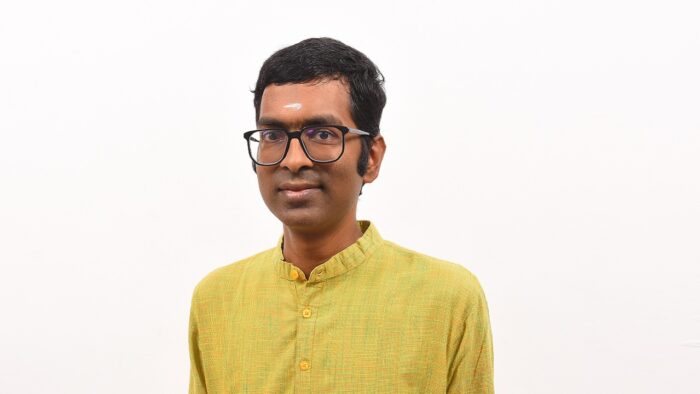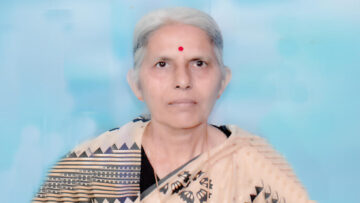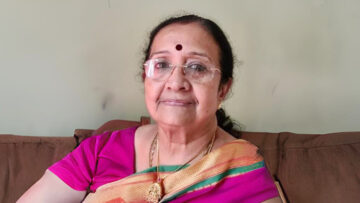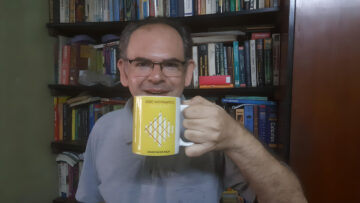Arvind V Iyer has a research background in Computational Neuroscience and Biomedical Engineering. His interests as an independent researcher include Indian languages, appreciation of classical performing arts, and contemplative practices. In this interview one can see how he is not reductionist in his views, the pitfall of many who try to validate Indic traditions through foreign lenses.
As a biomedical engineer and a theoretical neuroscientist how do you connect the Sandhyavandhana practices, today being Upakarma, to the impact on our mind and body?
I have come to believe that an understanding of traditional practices like Sandhyāvandana within their own traditional framing must receive priority and precedence over attempts to understand them in other frameworks, including ostensibly scientific ones. Sandhyāvandana itself is the prime example of what traditionally is called a Nityakarma, and thereby meant to be performed daily without exceptions and without expectations of any benefits, however demonstrable some benefits may well prove to be by scientific methods.
Consider an element of Sandhyāvandana whose mind-body impact is much commented on, namely, Prāṇāyāma. In the Yogasūtra of Patañjali, the outcome of Prāṇāyāma as part of the eight-fold Aṣṭāṅga scheme is said to be reduction of internal impurities that hinder the dawning of enlightenment (Yogasūtra 2.28, 2.52). Stated in terms more commonly used in Vedānta, Prāṇāyāma is meant to enable citta-śuddhi or purification of the mind. Attempts to study Prāṇāyāma outcomes ‘scientifically’ in terms of performance enhancement in some or the other task, or in terms of workplace productivity, understandably elicit much contemporary public interest, but ultimately seem driven by a collective neglect or forgetting of what purpose was conceived of for Prāṇāyāma in the authoritative original sources.
Consider another defining feature of Sandhyāvandana, namely, the witnessing of the sunrise with full presence. Benefits of unfailingly witnessing the sunrise with full presence, even if unaccompanied by other ritual elements, can be demonstrated behaviourally without the need for equipment-intensive or invasive neuroscientific or neurological investigation. Whereas systematic scientific demonstrations have their place, benefits of regularly being fully present for the sunrise can well be experienced for oneself too, regardless of one’s levels of scientific training.
How can we connect the many advances being made in neuroscience especially in neuroplasticity to our oral traditions and the ‘Sanskrit Effect’. Have you experienced it personally?
The ‘Sanskrit Effect’ is rightly put in scare-quotes, for being a catchy coinage based on a limited body of investigations. What is sought in such investigations too, like in investigations of Prāṇāyāma outcomes, is typically performance enhancement in some narrowly defined task or test, whereas what was originally sought was much broader in scope. An inordinate focus on improvements in memory capacity or recall while seeking an account of the benefits of learning Sanskrit, is like focussing only on melatonin and Vitamin D in the experience of sunrise, or only on the nutrient profile of mother’s milk in the experience of parental care. If those comparisons seem unfair, all we need to do is ask what the media reports of the ‘Sanskrit effect’ have to say about Rasa in Sanskrit kāvya literature. A discourse around the ‘Sanskrit effect’ that is found to have little or nothing to do with Rasa, can fairly be treated as nīrasa, that is, devoid of essence, or devoid of taste.
Personally, Sanskrit kāvya literature has indeed given me practical benefits in some areas. In order to train and test my memory after crossing what is conventionally called ‘college age’, I would assign myself exercises of learning and reciting Sanskrit verses from memory. Also, the metric nature of Sanskrit verse means that reciting certain verses at a standard pace can serve as a time-keeping aid. So, one can have collections of verses to recite when one wants to track the passage of a 5-minute duration or 10-minute duration unassisted by a clock. None of the verses selected for such purposes like memory training or time-keeping need to be devoid of rasa! They may well be bhakti-soaked Stotra-kāvya-s! The ‘Sanskrit effect’ as currently pitched has little to do even with artha or meaning, let alone rasa. However, even single verses recited even silently to oneself with understanding and with feeling can have calming or energizing or at times, life-saving effects too!
None of what I have said here about academic research related to Prāṇāyāma or Sanskrit is intended to disparage or detract from efforts towards growing scientific understanding of the relevant phenomena. It is just that a wait for academic ratification need not delay one’s experiencing for oneself what these practices have to offer!
You have written and spoken on a wide range of topics. What would you say are your main inspirational texts and scholars?
An outstanding expositor of our times of topics from a staggering range of source-texts and disciplines whose lectures from the past decade onwards I have tremendously benefited from is Śatāvadhānī Dr. R Ganesh. In recent years, the polymathic lectures of Prof. K Ramasubramanian on various platforms, the prolific online lectures in the sāhitya realm by Prof. Radhavallabh Tripathi, and ongoing lecture series on sāhitya via the Chinmaya International Foundation by Prof. Gauri Mahulikar have also been immensely educational.
In the numerous Indica conferences and symposia which I have had the pleasure of attending or myself participating in, a speaker whose scheduled as well as impromptu contributions are always much-awaited and instructive is Dr. Nagaraj Paturi, whose erudition straddling disciplines and ability to connect to diverse audiences are freshly inspirational each time.
How can one balance a life in today’s material world with the journey inward? What do our texts say about this journey inwards while fighting a wavering mind. Patañjali’s Yogasutras are about this. What about our other texts?
Much before I was exposed to the Yogasūtra-s of Patañjali, my introduction to traditional teachings on balancing material and spiritual needs was via public lectures on the Bhagavadgītā by expositors like Swami Parthasarathy and Smt. Jaya Row that I heard as a student in Mumbai. The Bhagavadgītā seems insistent that simply disregarding material demands and realities in the name of a spiritual quest is not an option, in verses like Chapter 3 Verses 4 and 6. Being aware of the failings that texts warn about, at the beginning at least serves to make one more keenly recognize those failings in one’s actions, which in turn with time and perseverance and remembrance can hopefully enable a gradual overcoming of those failings too. The teachers in our texts have given thoughtful and compassionate warnings aplenty about our failings, and also seem to have left it to us as an exercise to develop from our own experiences a “failure-based design” (of the sort that worked so well for Chandrayaan 3) for our inward journey home.
How can we prevent cultural appropriation of Yoga, Tantra, Ayurveda by the West? What are your thoughts?
Claiming one’s inheritance and owning it first of all demands showing up, which can start as simply as showing up for the sunrise when it happens, or showing up for the Yoga session or Stotra recitation when it is organized. A practice that is neglected and forgotten in the land of its origin, is more prone to be appropriated by outsiders and marketed as new, than a practice which is unmistakably alive in active communities and has become second nature. Material circumstances to prevent appropriation, and moral authority to resist appropriation are both favoured by more widespread and committed practice, be it of Yoga or the Sanskrit language. When Sanskrit manuscripts crumble to dust in libraries lying neglected by the ‘rightful inheritors’, protests against ‘outsiders’ who publish in print and allegedly ‘mistranslate’ those manuscripts sound hypocritical and hollow. Here too, showing up is the beginning, to learn first of all what texts are waiting to be read.
How do India’s performing culture traditions tie to your interests in our other traditions?
During student days, writings and lectures by Dr Vilayanur S Ramachandran (popularly known as VSR) on aesthetic universals in Indian art, were a major intellectual influence on how I approached the classical fine and performing arts. Be it in sculpture or drama, I would constantly be on the lookout for how the principles highlighted by VSR were applied, and that would add to my enjoyment. At the time, I was not yet familiar with the work of Indian aestheticians from antiquity. Now, two concepts due to the Kāśmīra polymath Mahāmāheśvara Abhinavagupta are on my mind whenever I attend a live performance. One is Sādhāraṇīkaraṇa, or the process by which an experience in the single mind of the artist is rendered accessible to the larger collective which the audience is. The other is Brahmānanda-sahodaratva, the notion that the joy occasioned by great art has as close a kinship to supreme bliss, as the bond between brothers. Whenever I attend a performance, I try to be inwardly awake for the moments when a sense of oneness with fellow-viewers is realized, and when flashes of the possibility and reality of supreme bliss become discernible.
Disclaimer: The opinions expressed in this article belong to the author. Indic Today is neither responsible nor liable for the accuracy, completeness, suitability, or validity of any information in the article.








